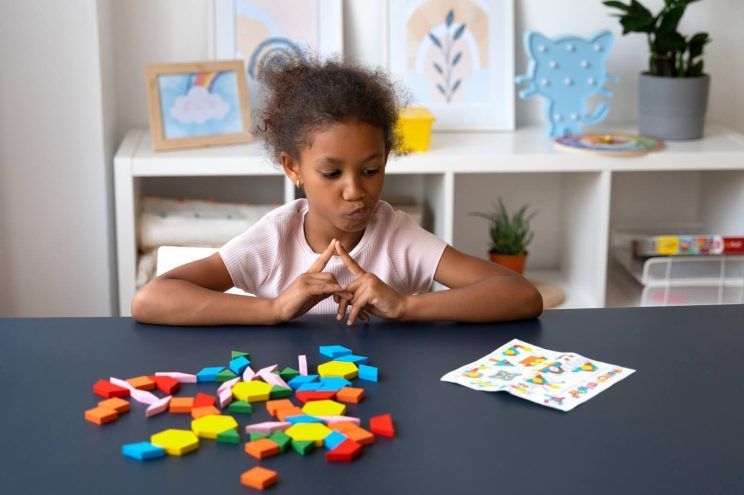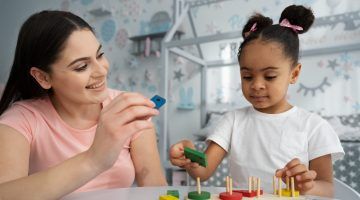How to Teach Adding Fractions? 6 Strategies
reviewed by Jo-ann Caballes
Updated on August 2, 2025
As your child progresses with fractions, they’ll eventually need to learn how to perform basic operations like addition. That’s where many of them stumble. In this review, I present six practical strategies to show your child step by step how to add fractions without stress.
Key Points
- Adding fractions step by step is one of the most challenging topics for kids in grades 3rd to 5th.
- Kids should first understand the common denominator method to perfect the addition of fractions.
- Using visuals, playing math games, and utilizing whiteboard tasks are favorite learning methods for visual learners.
- Worksheets and specialized math tests immediately check kids’ understanding of adding fractions.
- Addressing specialized Brighterly math tutors guarantees that your child will receive an in-depth walk-through of all the steps of adding fractions.
How to teach adding fractions?
- Learning adding fractions with a math tutor
- Practicing with worksheets & math tests
- Completing interactive whiteboard exercises
- Learning to add fractions with online math games
- Using the common denominator method
- Utilizing visual representations
Learn adding fractions with math tutors
Suppose your child faces difficulties when adding fractions. Then, they may need a helping hand to clarify the pattern, walk them through the process, and finally give them sufficient practice. The most skilled and reliable people to do so are math tutors.
For instance, Brighterly teachers are recognized for their personalized approach, which focuses on each child’s unique needs and helps target the specific areas where they may struggle.
How can Brighterly math tutors help your child learn adding fractions?
Learn adding fractions with tailored explanations in the 1:1 setting
All Brighterly lessons are held in a private format, meaning that teachers can devote the maximum of their attention to individual students.
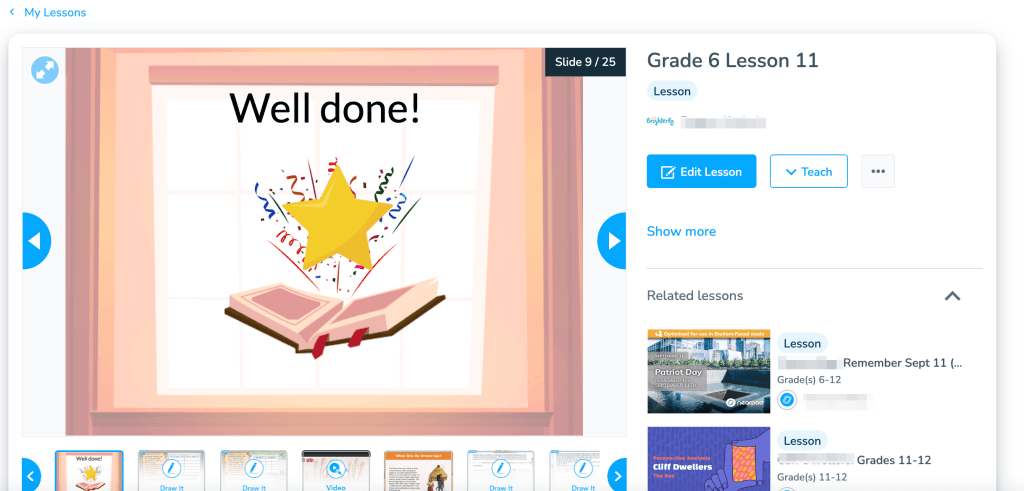
The Brighterly math tutoring platform believes that creating a personalized curriculum is the only way to help kids excel when adding fractions or other math topics.
How does Brighterly ensure personalized learning in 4 steps?
- Once kids register on the platform, they are asked to complete diagnostic testing. The results show their current knowledge level.
- Then, the platform matches your kid with the best-fitting Brighterly private math tutor with the exact qualifications to address their needs.
- Before we launch a study process, a teacher compiles a detailed curriculum to build on the current knowledge and address all the gaps.
- While learning, your child will undergo constant evaluations from the teacher. It allows them to adjust the Brighterly math program and devote sufficient time to the specific topic.
The best part? All lessons at Brighterly are held in the 1:1 setting, meaning that the teacher will focus on your child only. This atmosphere fosters communication and cooperation and allows effective combat of any psychological boundaries in learning math.
Plus, following national standards and relying on Common Core principles ensures that students systematically learn the correct methods and build on their knowledge.
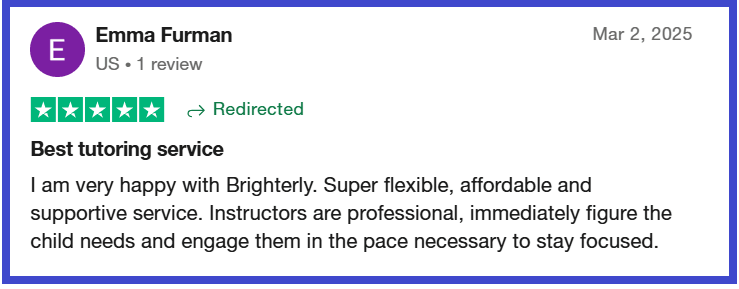
How to teach adding fractions with the gamified approach
The gamified approach adopted by the Brighterly math tutoring platform turns learning into an interactive experience.
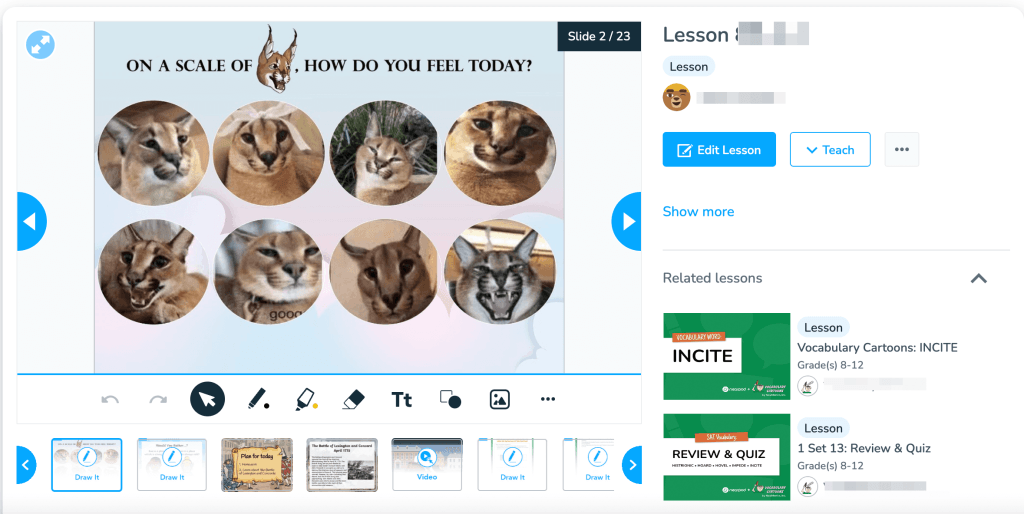
According to the research conducted at the Chaoyang University of Technology, the dynamic, highly involving study method can increase student engagement and guarantee better academic performance. Being aware of efficiency, Brighterly builds its learning process on gamified tasks.
Especially effective for kids in elementary and middle school, the interactive approach integrated into each math class guarantees that kids focus on the specific task and proves that their minds won’t deviate.
All in all, this strategy destroys the general stereotype that learning is a daunting, tedious process. Instead, it captures your kid’s interest, making them eager to continue without even realizing they’re doing math — it feels more like playing a fun game.
Learn adding fractions for kids by providing real-world context
Understanding the real-world application of any theory is the main principle undermining STEM-based learning. It’s also the approach widely implemented by the Brighterly math tutoring platform.
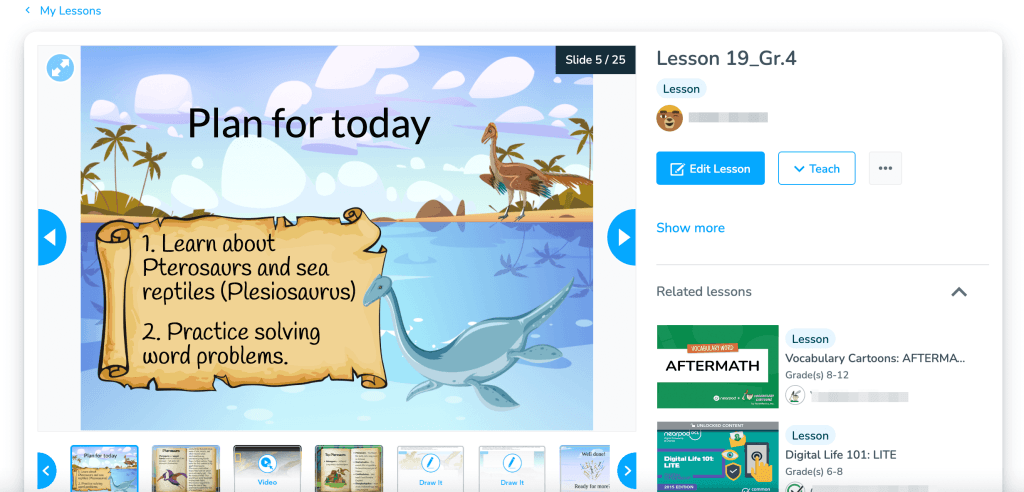
Grades 3 to 5 are when kids get acquainted with fractions and learn to complete mathematical operations.
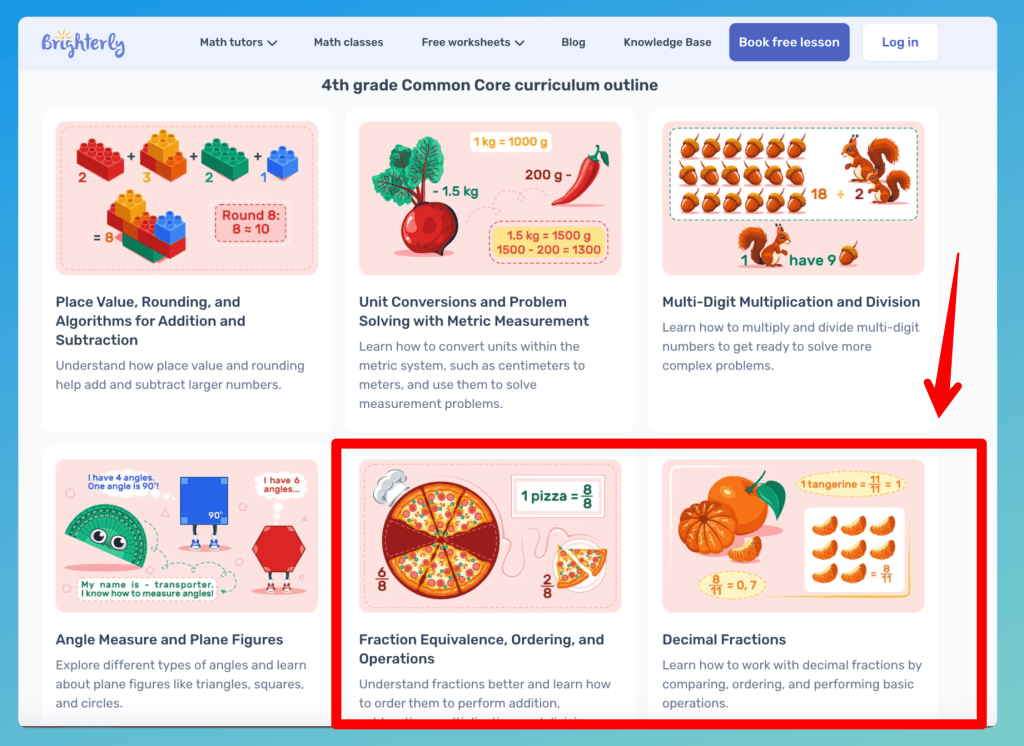
Brighterly math program for 4th grade
These are also the transitionary grades when they build a solid understanding of math concepts for more advanced studies in the future. Failed to create value for them? Your child may have trouble with math.
Now, what is the trick for adding fractions with Brighterly?
Brighterly makes the topic more meaningful by showing how it’s used in real-life situations, like:
- Cookery, especially when one wants to adjust service sizes
- Measuring length and distances
- Dividing specific resources, like splitting a whole pizza to get 3/4 of the service
- Financial operations, when calculating proportions and other percentages
- Various science branches, especially in chemistry
The list can be continued…
While studying, Brighterly math tutors closely analyze your child’s preferences and hobbies. This knowledge helps them to present the most accurate learning context.
And one more benefit I’ve discovered is that prices here are pretty reasonable and flexible. In total, this site lists 12 (!) budgeting options, with the possibility of saving up to 37%. Intriguing? It is! Check the Brighterly affordable price here for further info.
How to teach adding fractions with worksheets and math tests
The main benefit of learning fractions with worksheets and tests is that these tools give kids a wealth of practice. Furthermore, when derived from reputable resources, worksheets will be provided as bright and colorful tasks instead of the pure word problem format.
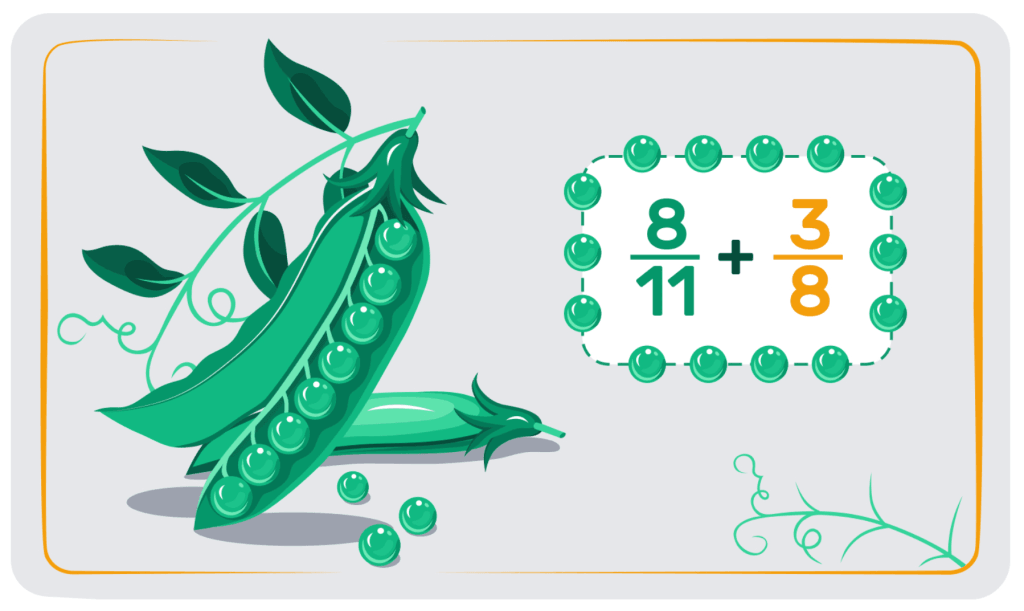
Brighterly math worksheets
Wondering where you can find the most relevant and engaging tasks for your kid’s home practice? Brighterly has lots of valuable learn adding fractions worksheets to help your child practice and master the topic! Plus, you can also train fractions with other operations like subtraction here. Check out this content:
- Adding Fractions With Unlike Denominators Worksheets
- Adding Fractions Worksheets
- Adding and Subtracting Fractions Worksheets
- Adding Fractions with Like Denominators Worksheets
Still hesitating if tasks of this kind will prove effective for your kid’s case? Below, I include just one example of adding fractions tasks you can find on the platform.
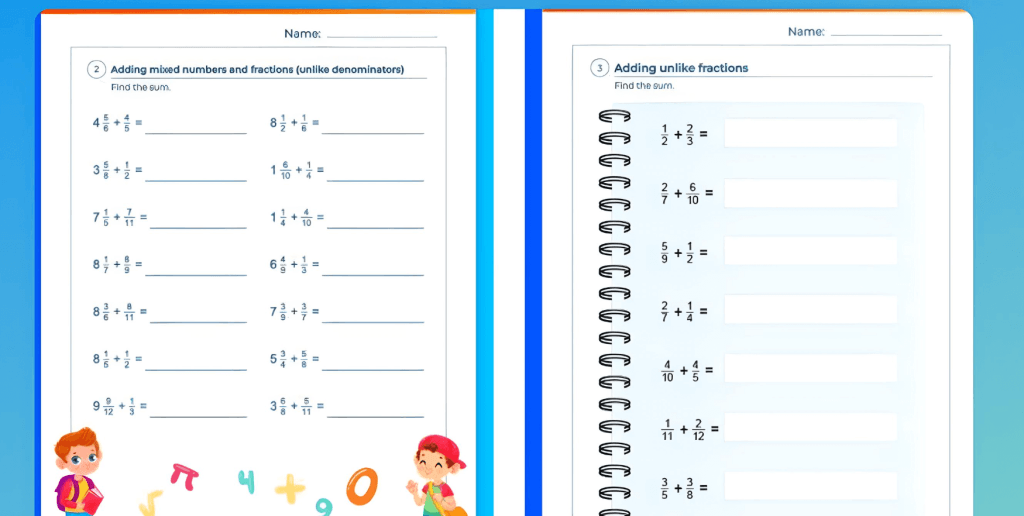
Learn adding fractions with math worksheets: Practical tips
- Before jumping into more complex problems, learn adding fractions with like denominators. Thus, choose your worksheets carefully to match the current level.
- Use worksheets with visual representations whenever possible. Alternatively, you can craft visuals by yourself. The most common way is using bars or pie charts to show how the fractions fit together.
- Incorporating real-world examples into the worksheets helps to add meaning. For instance, present scenarios like dividing a pizza, combining liquids, or measuring ingredients.
Learn adding fractions with math worksheets: Benefits
- Math worksheets help students to transition from passive listeners to active participants. With these practices, the child can get hands-on experience with exact problem-solving techniques to better understand the concepts.
- Worksheets allow kids to work at their own pace. If they need more time to understand a specific concept, you are welcome to ponder a little. It is what individualized learning is all about — students can progress according to their abilities without feeling overwhelmed.
- When choosing worksheets to learn the addition of fractions with answers, you guarantee that the kid gets immediate feedback on their performance. This way, they can correct mistakes immediately and understand where they went wrong.
Learn adding fractions with interactive whiteboard exercises
Writeboard exercises present an effective way to teach adding fractions through graphic depiction. Such interactive whiteboards allow kids to manipulate fraction bars, drag and drop numbers, and visualize sums. Practicing this type is most effective for demonstrating common denominators, fraction models, and step-by-step calculations.

Learn adding fractions with whiteboard exercises: Practical tips
- On the whiteboard, you can use visual fraction models like bars, circles, or number lines. Dragging and resizing these tools helps to understand concepts like common denominators.
- With drag-and-drop activities, kids can move numbers, fraction pieces, or denominators into place. Games like this make learning more active and engaging than just writing down answers.
- How to teach adding fractions with unlike denominators? Break down the fraction addition process into steps with guided animations. This way, the whole flow will seem more straightforward.
Learn adding fractions with interactive whiteboards: Benefits
- Interactive whiteboards combine visual, auditory, and kinesthetic learning. Thus, seeing animations, hearing explanations, and physically interacting with fraction models reinforce understanding.
- Using interactive whiteboards brings instant feedback. So students can immediately adjust their answers and better retain the flow.
- Using specific visual representations creates the real-world context for the theory children learn. Some addition of fractions examples include measurements, cooking, and money management.
Learn adding fractions with online math games
Games to teach adding fractions always prove effective. Examples include puzzles, timed challenges, drag-and-drop exercises, and real-world scenarios. These days, there’s a wealth of those resources online. One of the huge benefits is that they come with adaptive difficulty levels and rewards, helping kids concentrate on the task.

Learn adding fractions with online math games: Practical tips
- If your child isn’t acquainted with the type of activity, choose the games with step-by-step explanations. These samples break down fraction addition into clear steps and let kids move at their convenient pace. This way, students learn concepts better, not just try to get the right answers.
- Try using a timer to accelerate quick thinking. This step helps improve mental math skills. Besides, short bursts of fast problem-solving enhance retention.
- Some online math games adjust difficulty based on a child’s performance. Smooth transition from simple to complex concepts — that’s what you’ll get as a result.
Learn adding fractions with online math games: Benefits
- Online games turn math into an enjoyable experience. This approach keeps your child motivated and reduces math anxiety.
- Math games often include puzzles, strategy-based challenges, and real-world applications. All these elements encourage children to think critically rather than just memorize rules. As a result, they can improve logic and reasoning skills.
- Games create a low-pressure environment where students learn through trial and error. They also don’t have to fear failure here. Instead, games motivate them to keep studying as they complete levels and earn rewards.
Learn adding fractions by using the common denominator method
How to teach fraction addition in the easiest way with unlike denominators? Since fractions represent parts of a whole, having a common factor of a number is a must. That’s because then you can directly add the numerators while keeping the denominator unchanged. When following the method, the child should first identify the greatest common factor of the denominators.
Done? Now, the question is how to add fractions with a common denominator. That’s simple overall — the child just needs to add the numerators together while keeping the denominator unchanged. Then, ask them to complete a simplification if possible.
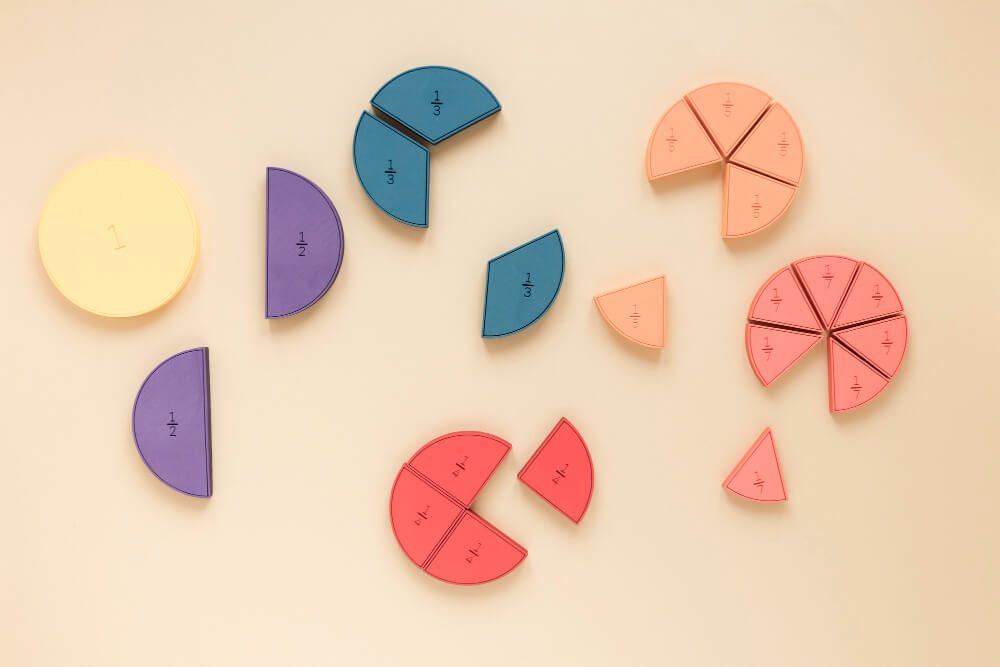
Learn adding fractions by using the common denominator method: Practical tips
- Instead of multiplying the denominators right away, find the smallest multiple that both denominators share. This way, you get smaller numbers you can easily manage.
- When practicing, move from simple to more complex examples. For instance, you can start from something like 14 + 24, which boosts your child’s ability to perform addition with the same denominators. Once they perfect it, please move on to the tasks that show how to add fractions with different denominators, like this one 13 + 25.
- After adding, check if the sum can be reduced to its simplest form. If the numerator is larger than the denominator, convert it to a mixed number.
Learn adding fractions by using the common denominator method: Benefits
- This method brings a pattern to the process, meaning a kid has a system for solving a problem. Thus, they should find the LCD, adjust numerators, add, and simplify — that’s it.
- This approach helps to boost problem-solving skills with your child. Understanding what LCD is and learning to find it is a decisive step.
- Using a common denominator helps students to compare fractions easily and better understand fraction size. Thus, kids become more confident overall while solving math problems.
Learn adding fractions by using visual representations
If I had to provide a single method on how to teach adding fractions, it would be using visuals. The variety of approaches is impressive — you can use any visual model like fraction bars, pie charts, number lines, blocks, and grids.
With color-coded fraction pieces or digital interactive tools, kids can compare fractions, find common denominators, and understand how fractions are equivalent to their representations. Effective for anyone, this approach will bring the next-level benefits to young learners and visual thinkers.
Learn adding fractions by using visual representations: Practical tips
- Fraction bars or strips are some of the most effective visual tools out there. They show students how different fractions relate to each other and find a common denominator easily.
- Pie charts are ideal for visualizing fraction parts. They will help your kid see how fractions work as a whole and vice versa, how the whole can be divided into parts.
- Coloring visual representations can further accelerate the effectiveness of this method. So, use different colors for each fraction part to distinguish, compare, and combine them easily.
Learn adding fractions by using visual representations: Benefits
- With this approach, you move from visual representations to concrete concepts. It boosts understanding, especially for young learners.
- Many students struggle with fractions because they seem confusing, but using colorful and interactive visuals makes learning fun and less intimidating. This approach helps reduce anxiety and makes math seem like a game.
- Graphic representations cater to visual and kinesthetic learners. So, students who struggle with traditional number-based methods can grasp fractions more effectively.
Conclusion: What is the best way to teach adding fractions?
Now you know that learning fractions can become a breeze if you have an arsenal of working tools and methodologies at hand. Just to summarize, here are some of the most popular steps for adding fractions:
- If your kid is a visual learner, they will benefit from varied pictorial representations, whiteboard exercises, or playing math games.
- Looking for ways to learn adding fractions with unlike denominators? After the child grasps the overall flow, move to worksheets and math tasks for a good portion of practice.
- But if you’re looking for guided help with a tutor who would walk children through all the steps, stopping and explaining all the issues, addressing the Brighterly math tutoring platform may be the best choice.
Don’t hesitate to book the free demo lesson now to test the learning flow here yourself!

